Thinking About an Ocean Tattoo? An Artist’s Guide to Getting It Right
I’ve had a tattoo machine in my hand for what feels like a lifetime now. And in all that time, I’ve seen countless incredible ideas walk through the shop door, but the ocean… the ocean always comes back. It’s this powerful, endless source of inspiration for my clients and, honestly, for me too.
In this article
I learned the ropes in a coastal town where the sound of gulls was the soundtrack to the buzz of my first machine. My mentor, a true old-school artist who’d tattooed countless sailors back in the day, taught me something crucial: an ocean tattoo isn’t just a picture. It’s about capturing a feeling—freedom, raw power, deep mystery, or a quiet sense of peace.
People come in with phones full of beautiful images they found online, and that’s a fantastic starting point. But my job is to help translate that picture into a piece of living art that will look good not just today, but in ten or twenty years. This guide is basically the rundown I give every client during a consultation. It’s about helping you understand the craft, the choices you need to make, and how to care for a piece of the ocean that will be with you for life.
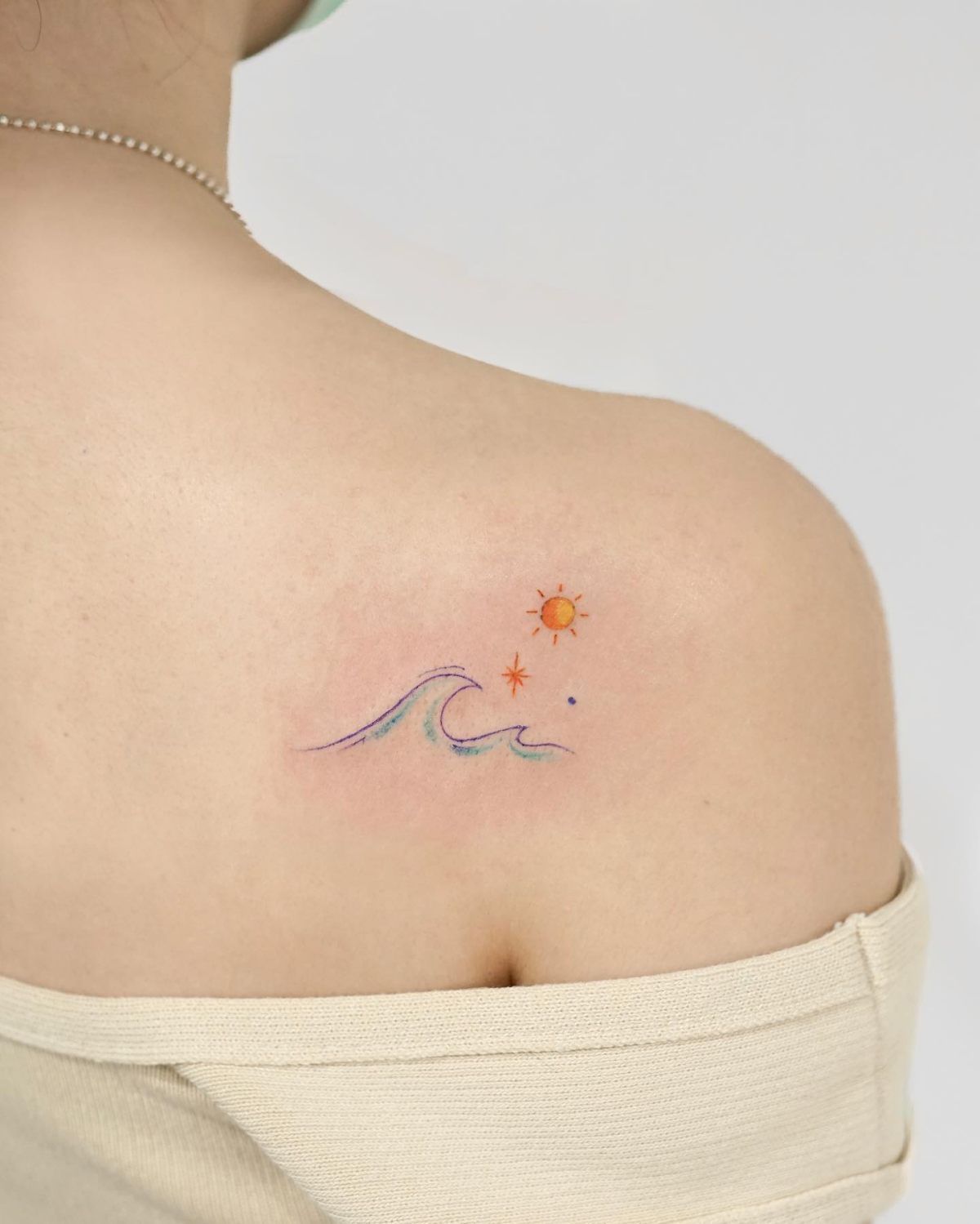
First Things First: Your Skin is the Canvas
Before we even get to the fun stuff like designs, we have to talk about your skin. A perfect drawing on paper won’t always look the same on a living, breathing canvas. Getting a handle on a few basics will help you set realistic expectations and work with your artist to create something truly special.
A tattoo isn’t just paint on the surface. My machine uses incredibly fine needles to place tiny droplets of ink into the dermis—that’s the stable layer of skin below the one you see (the epidermis). Your epidermis is always shedding, but the dermis holds on. Your body’s immune system rushes in, sees the ink as an invader, and tries to clean it up. But the ink particles are too big for the cells to carry away, so they just get locked in place, showing their color through your skin. This is why a bright yellow on paper will look different on pale skin versus skin with more melanin. The final look is a blend of ink and you.
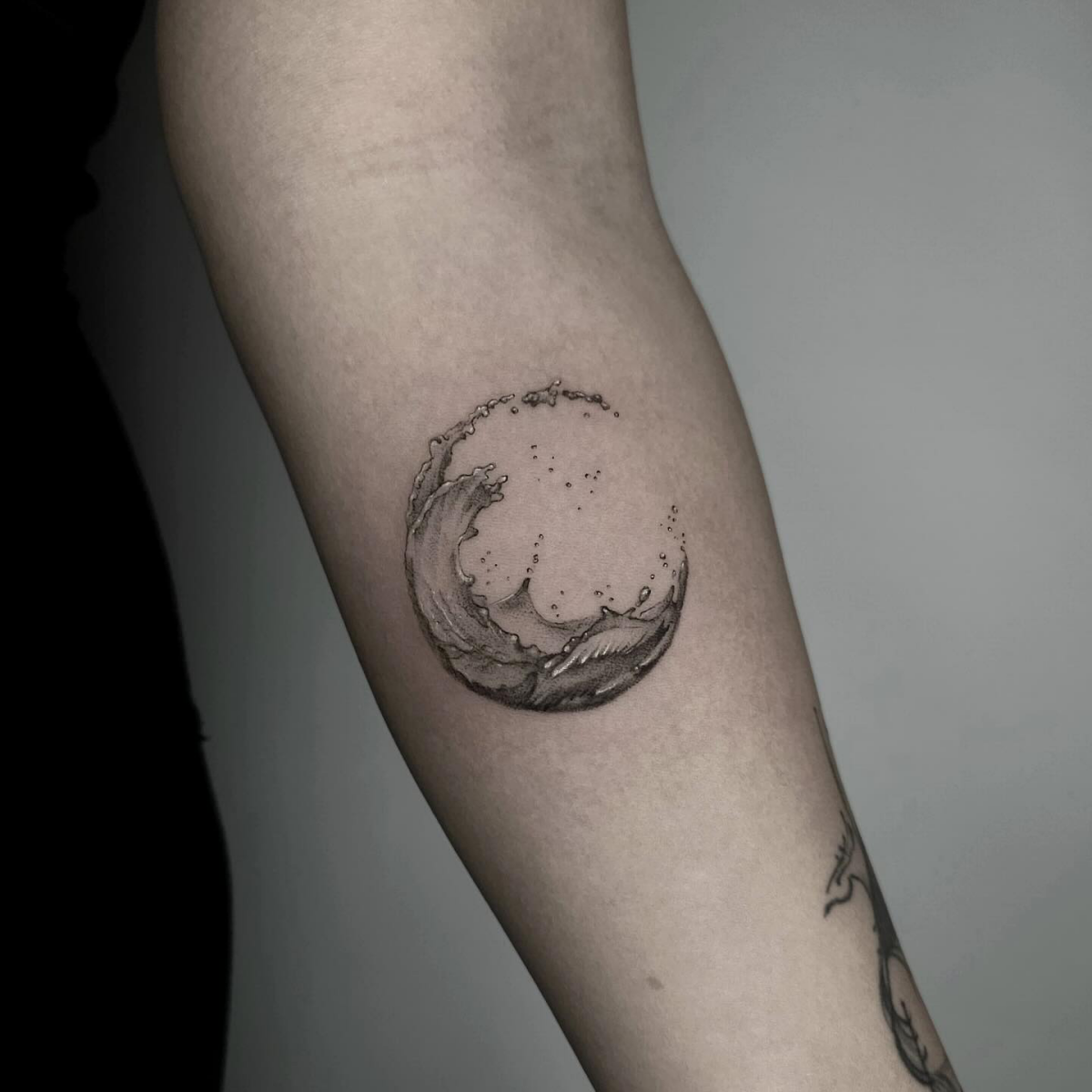
Location, Location, Location… and Ouch.
One of the very first things I’ll ask you is, “Where are you thinking of putting it?” This is a huge deal. The placement of your tattoo affects how it heals, how it feels to get, and how it holds up over time. I’ve had to gently talk more than one person out of getting a hyper-detailed seashell on their palm.
- The Sweet Spots: Places like your forearm, the outer part of your thigh, your calf, and most of your back are tattoo-friendly. The skin is relatively stable, doesn’t stretch a ton, and isn’t subject to constant friction. Tattoos here tend to heal beautifully and keep their crisp details for a long, long time.
- High-Movement Zones: Think elbows, knees, wrists, and ankles. These areas are constantly bending and stretching. This can make the healing process a little more challenging and might cause fine lines to soften or spread a bit more over the years.
- High-Friction Areas: Hands, feet, fingers, and the inside of your bicep (where your arm rubs against your body) are tough spots. The constant rubbing from clothes, shoes, and daily life can wear a tattoo down, meaning you’ll likely need more frequent touch-ups to keep it looking fresh. Getting ink to stay in these areas requires a special touch.
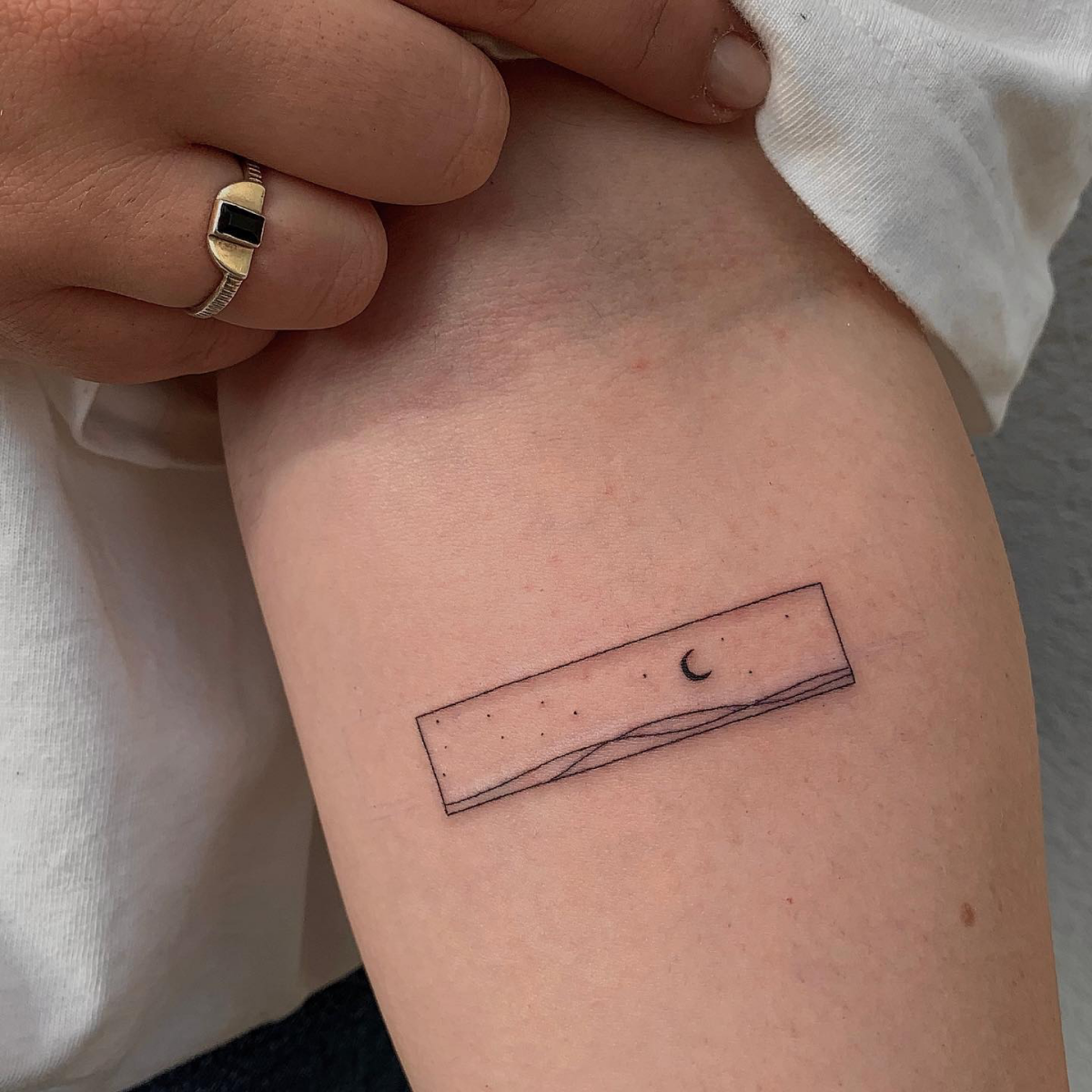
Let’s Be Real for a Second: The Pain
Don’t be shy about asking how much it’s going to hurt. Everyone wants to know. A huge, detailed octopus on your ribs is a serious test of endurance, and it’s better to plan for that than to tap out halfway through. We can always split a big piece into multiple sessions!
To give you an idea, think of it on a scale of 1 to 10.
- Forearm or Calf (4/10): Most people describe this as a constant, annoying cat scratch. It’s very manageable.
- Ribs, Sternum, or Feet (7-8/10): This is a different beast entirely. It’s often a sharper, hotter, and more intense vibrating sensation. It’s definitely not fun, but it’s temporary!
What’s Your Style? A Tattooer’s Take on Ocean Art
Okay, let’s get into the art. An “ocean tattoo” can mean a million different things. The style you pick is the biggest factor in how your tattoo will look, feel, and age. Here are the main styles I work with and how they translate to ocean themes.

Fine-Line & Minimalist
This delicate style is incredibly popular, and for good reason. It uses a single needle or a very small grouping to create thin, elegant lines. It’s perfect for a simple wave on an ankle, a tiny shell behind the ear, or a constellation over a calm sea.
How it ages: I’m always upfront with my clients about this. Fine-line tattoos look razor-sharp when they’re fresh. But over many years, as your skin does its thing, those lines will naturally soften and thicken a tiny bit. If a design is too small and crowded, it can become a bit blurry over time. The key to a long-lasting fine-line piece is giving it room to breathe—go a little bigger than you think and keep some negative space between the lines.
Heads up! The main risk here is something we call a “blowout.” Imagine drawing on cheap paper with a Sharpie and watching the ink bleed into a fuzzy halo. That’s a blowout on skin. It happens when the ink goes too deep, and it’s permanent. This is exactly why you need an artist with a super steady hand and years of experience with this delicate style.
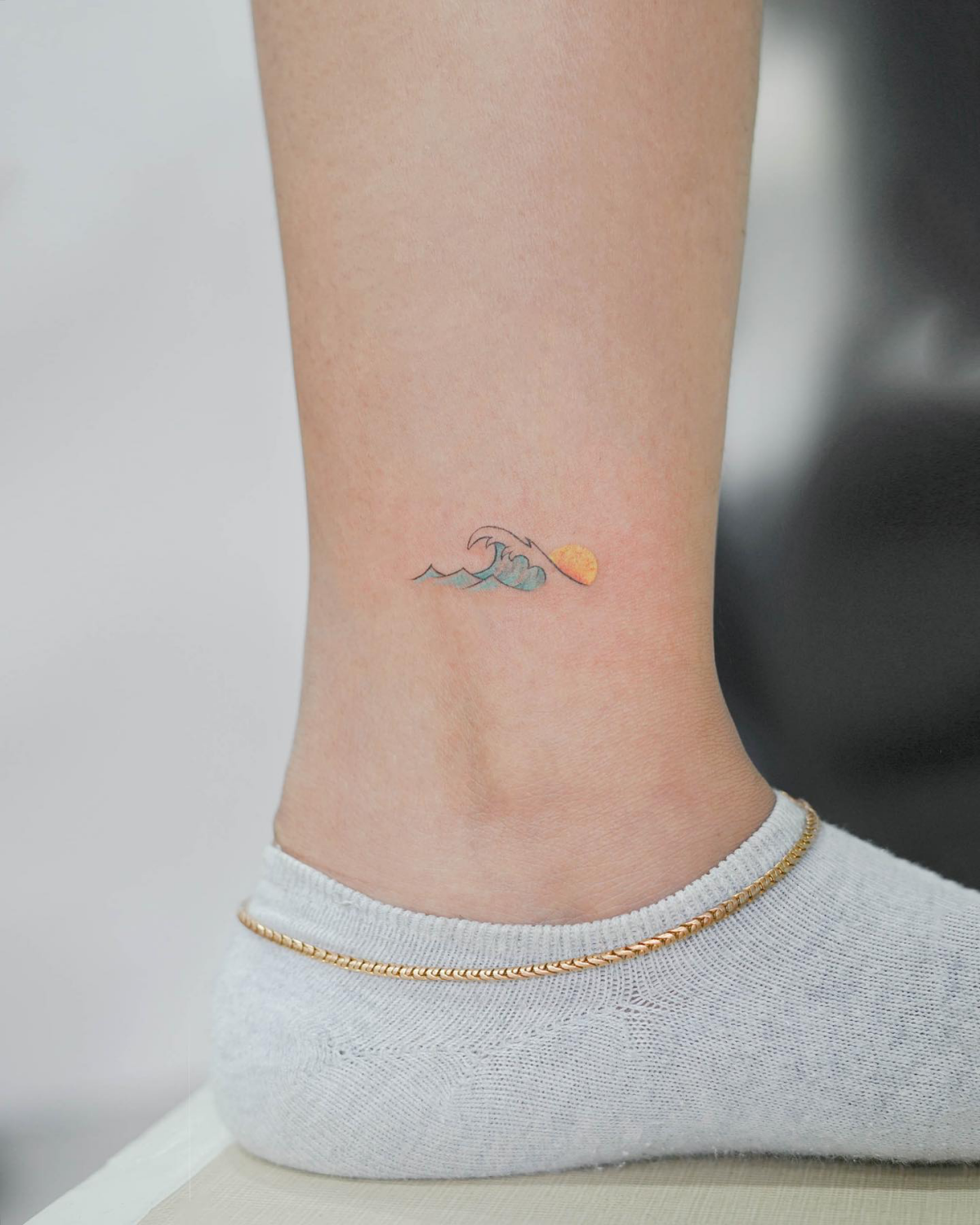
American Traditional
This style has deep roots in the sea, born from the designs sailors wore as badges of honor. It’s bold, powerful, and, most importantly, it’s built to last. Think heavy black outlines, a limited palette of solid, bright colors (reds, greens, yellows), and powerful black shading. There’s no subtle blending here—it’s about creating an image that’s readable from across the room.
When it comes to longevity, this style is the undisputed champion. Those bold black outlines act like little retaining walls, holding the color in and keeping the whole design together for decades. I’ve seen 50-year-old traditional tattoos that are still perfectly clear. It’s the ideal style for classic ocean symbols: ships, lighthouses, sharks, and anchors.
Japanese Traditional (Irezumi)
When a client wants a truly epic and dynamic ocean scene, I often point them toward the Japanese style. It’s a deep and disciplined art form that’s all about flow and power. A Japanese-style wave isn’t just a drawing; it’s designed to flow with the muscles of an arm or back, making it a part of the body itself.
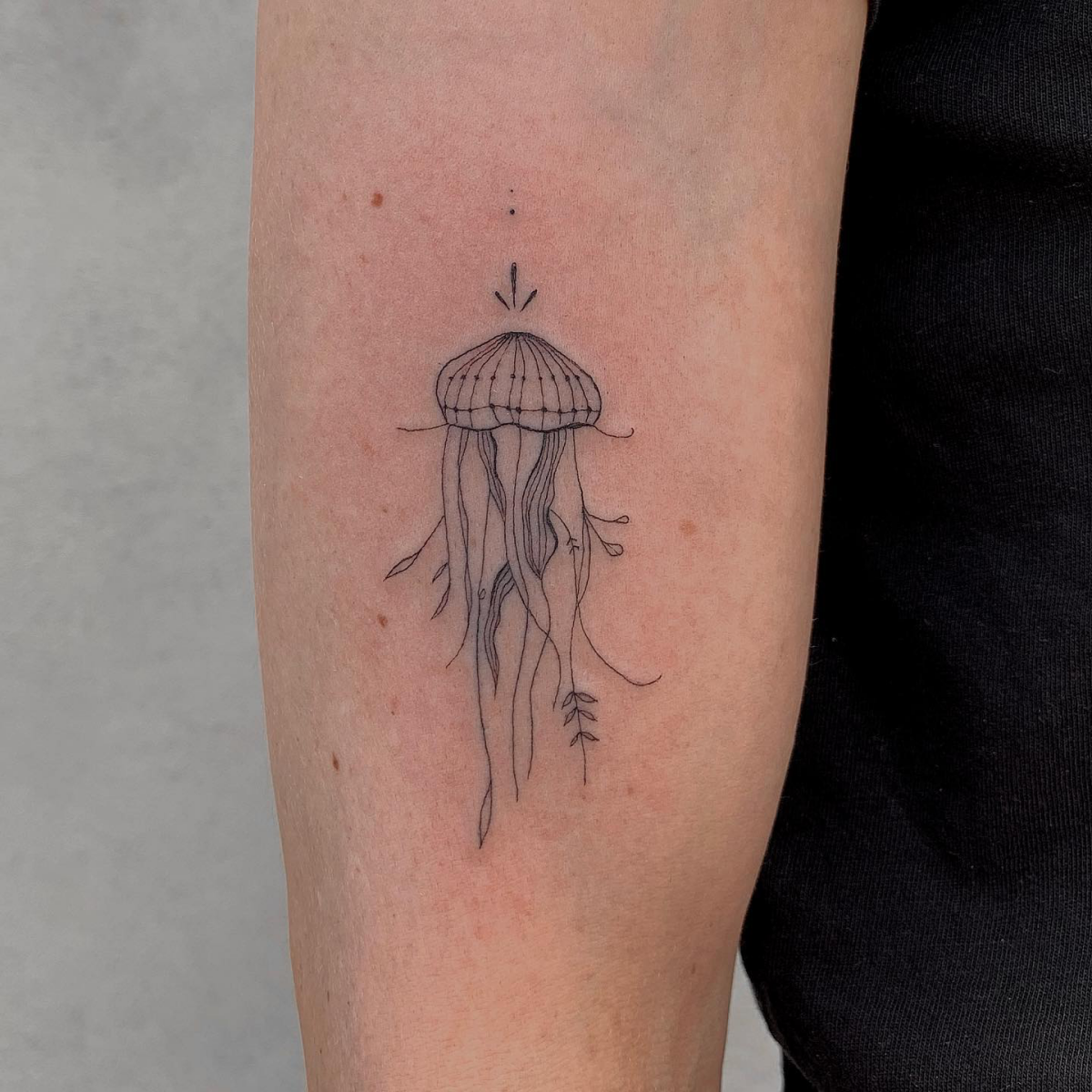
This style is famous for its iconic “finger waves,” solid black or grey backgrounds, and powerful subjects like Koi fish and dragons. It’s a discipline with a rich history and established rules. This style truly shines in large-scale formats like a full sleeve or a back piece. A full sleeve of crashing waves around a dragon is a serious commitment—often taking 40-60 hours—but the result is breathtaking.
Black & Grey Realism
For those who want a photorealistic image, black and grey is a fantastic choice. This style is all about capturing light, shadow, texture, and depth without a drop of color. We don’t actually use grey ink; we create all the tones by carefully diluting black ink with distilled water, a technique called a “grey wash.”
The secret here is contrast. A tattoo without enough deep blacks and bright highlights might look okay when it’s fresh and irritated, but it can heal into a flat, muddy-looking image. I always make sure to pack in the darks to ensure the tattoo has pop and will still look amazing in five years. This style is incredible for capturing the creepy texture of an octopus’s skin or the eerie light of a deep-sea anglerfish.
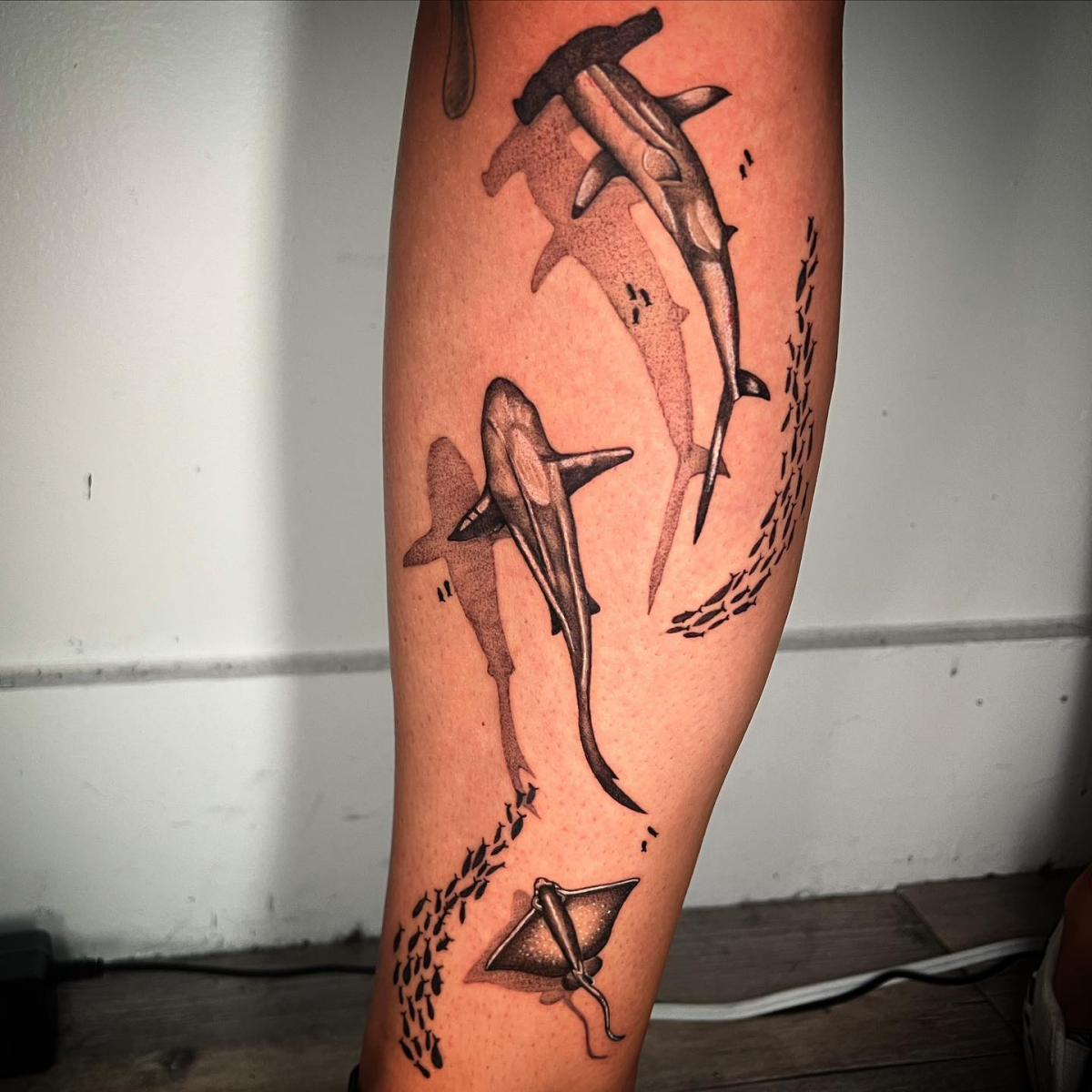
Color Realism
This is what many people picture when they think of a vibrant coral reef or a brilliant sunset over the water. It’s one of the most technically demanding styles, basically like oil painting on skin. We layer and blend colors directly in the skin to create smooth gradients and rich, saturated hues. It requires a deep knowledge of color theory.
A quick word on longevity: You have to be a little more careful with color realism. The sun is its number one enemy. UV rays break down the ink pigments and cause them to fade, especially lighter colors like yellows, light blues, and pinks. Diligent use of high-SPF sunscreen is non-negotiable if you want to protect your investment!
The Practical Stuff: Money, Prep, and Aftercare
Getting a great tattoo is a partnership. Here’s how you can be a great partner in the process and ensure you get the best possible result.
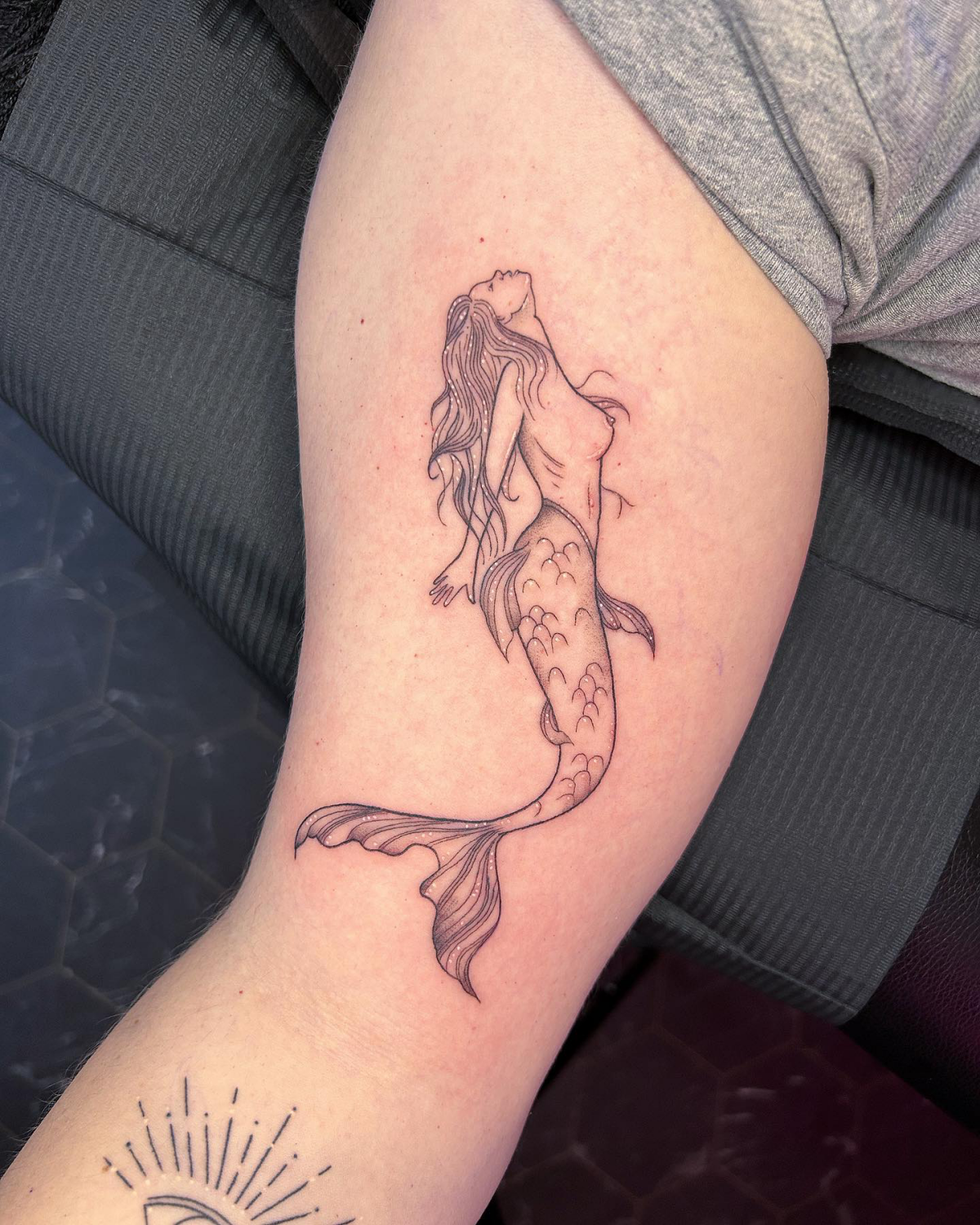
Let’s Talk Money: What to Actually Expect to Pay
Alright, let’s get the big question out of the way. How much is this going to cost? It varies, but here’s a realistic breakdown.
Most reputable shops charge by the hour, typically somewhere between $150 and $250 per hour. This rate depends on the artist’s experience, their demand, and the city you’re in. For a smaller, palm-sized piece, an artist will usually quote you a flat rate, which could be anywhere from $250 to $500. A full sleeve or a back piece is a major project and a real financial investment, often running into the thousands of dollars over many sessions. Don’t go for the cheapest artist—good tattoos aren’t cheap, and cheap tattoos aren’t good.
How to Find the Right Artist for You
Don’t just walk into the first shop you see. Your first step is research. Honestly, the best place to start these days is Instagram. Search for hashtags like `
[yourcity]tattooartist` (e.g., `
LAtattooartist`) or by style, like `
Japanesetattoo` or `
finelinewave`. An artist’s Instagram is their modern-day portfolio.
When you look at their work, don’t just look at the shiny, fresh photos. Hunt for pictures or videos of HEALED work. This shows you the artist’s true skill and how their tattoos hold up over time. During your consultation, bring your photo references, but be ready to talk about the feeling and the story you want to capture. The best tattoos come from that kind of collaboration.
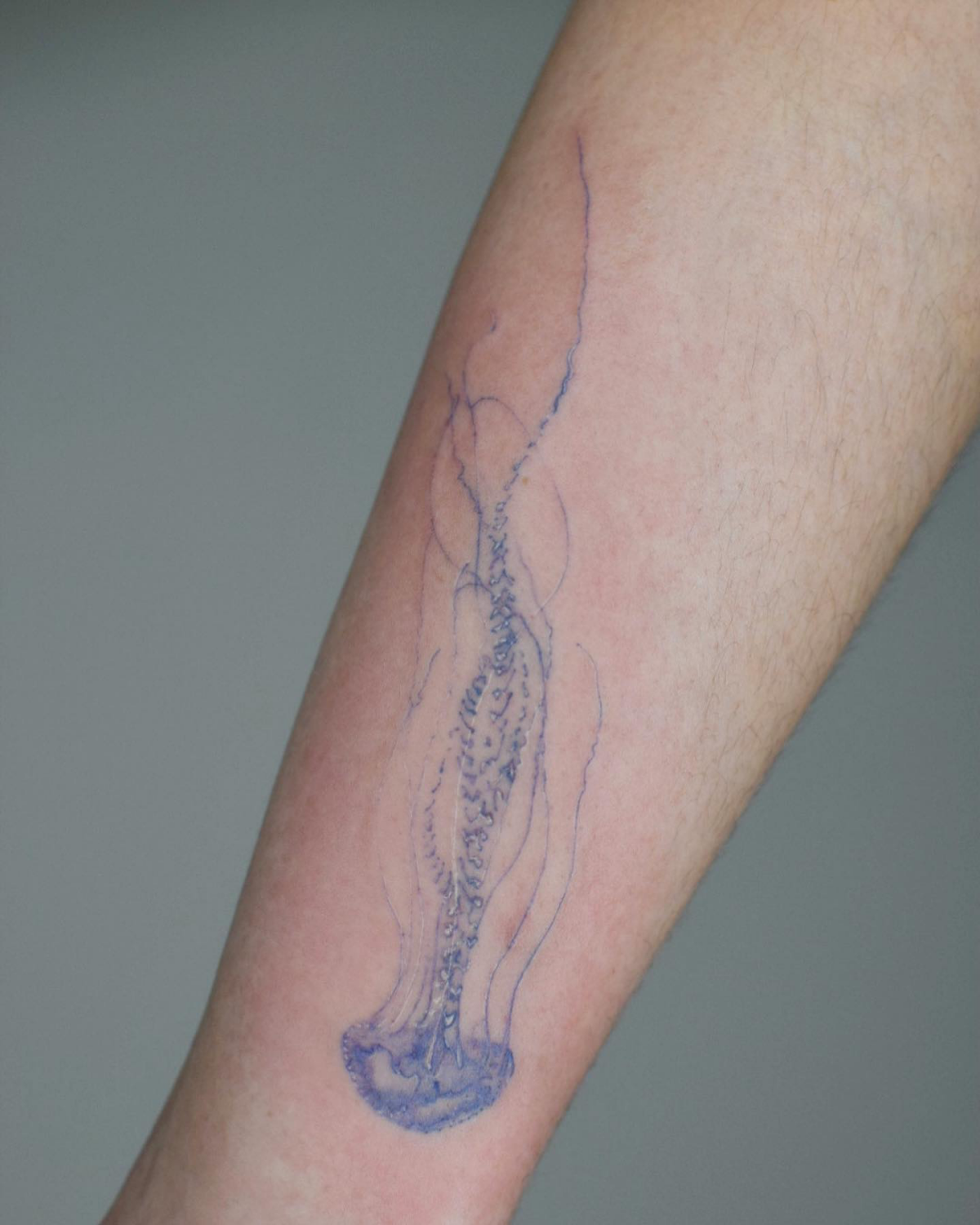
Your Tattoo Is Done… Now What? The Aftercare Play-by-Play
The artist’s job is done, but yours has just begun. Proper aftercare is what makes or breaks a tattoo. It’s not complicated, but you have to be diligent for the first couple of weeks.
Here’s what you need to do:
- Get the right supplies: Head to a drugstore and pick up two things: a gentle, unscented antibacterial liquid soap (Dial Gold is the classic choice) and a simple, fragrance-free lotion (like Lubriderm, Cetaphil, or Aquaphor).
- Day 1-3 (The Ointment Phase): Your artist will bandage you up. Leave that on for as long as they tell you (usually a few hours). Then, gently wash the tattoo 2-3 times a day with the soap and warm water. Don’t scrub! Pat it completely dry with a clean paper towel, and apply a very thin layer of Aquaphor. You want it to be barely shiny, not goopy.
- Day 4-14 (The Lotion Phase): Your tattoo will start to feel dry, tight, and may start to flake or peel like a sunburn. This is normal! Stop using the ointment and switch to the unscented lotion. Apply a thin layer a few times a day whenever it feels dry. Don’t pick or scratch at the flakes! Let them fall off on their own.
And that’s pretty much it. Keep it clean, keep it moisturized, and keep it out of the sun and swimming pools for at least two weeks. Do that, and you’ll have a beautiful piece of the ocean to carry with you forever.

Galerie d’inspiration
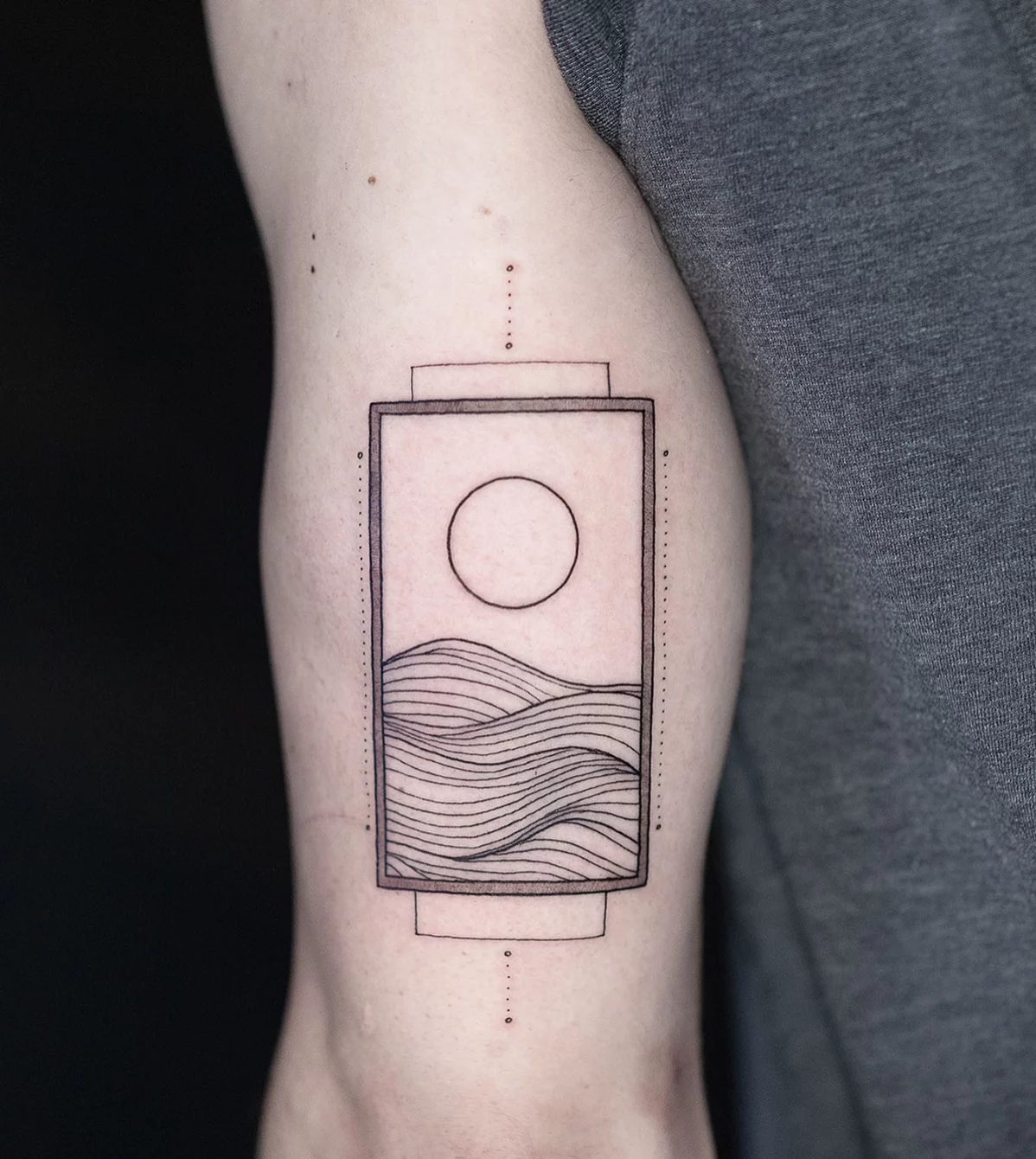
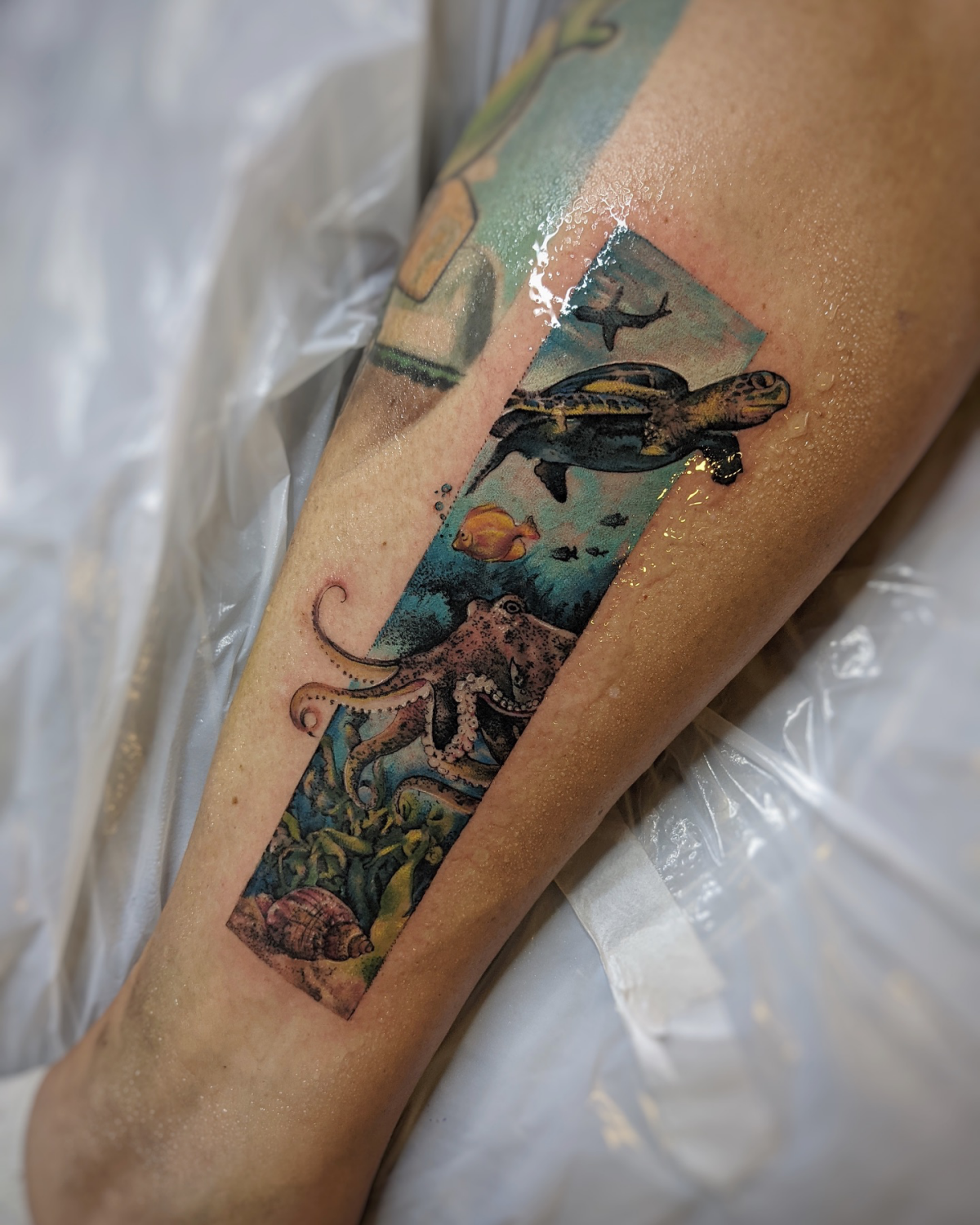
Japanese Irezumi Waves: Characterized by bold, black outlines and stylized finger-like foam, these waves represent power and life’s fluidity. They wrap beautifully around limbs, emphasizing muscle and movement.
Photorealistic Waves: This style aims to capture a moment in time, focusing on light, transparency, and the chaotic spray of a crashing wave. It requires an artist skilled in subtle shading and white highlights, perfect for a specific memory of the sea.
The choice depends on whether you seek symbolic power or a hyper-real snapshot of nature.
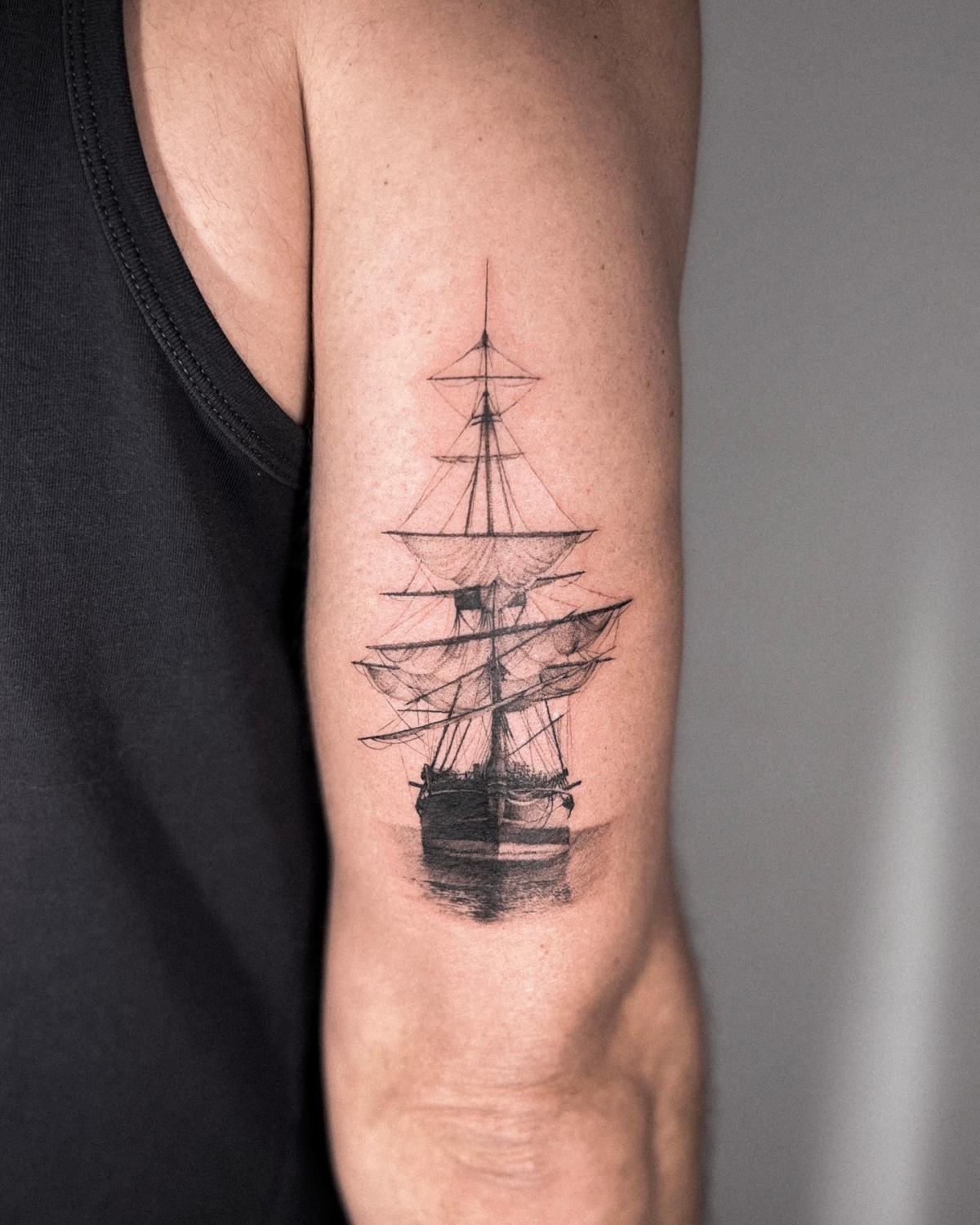
The color blue is often the first to be perceived as fading in a tattoo, not because the ink disappears, but because the shorter wavelength of blue light scatters more easily as it passes through the aging layers of your skin.
This means that over the decades, the crispness of a deep blue sea may soften. A skilled artist anticipates this, packing the color densely and often using a strong black base to ensure the tattoo’s structure remains powerful for life.
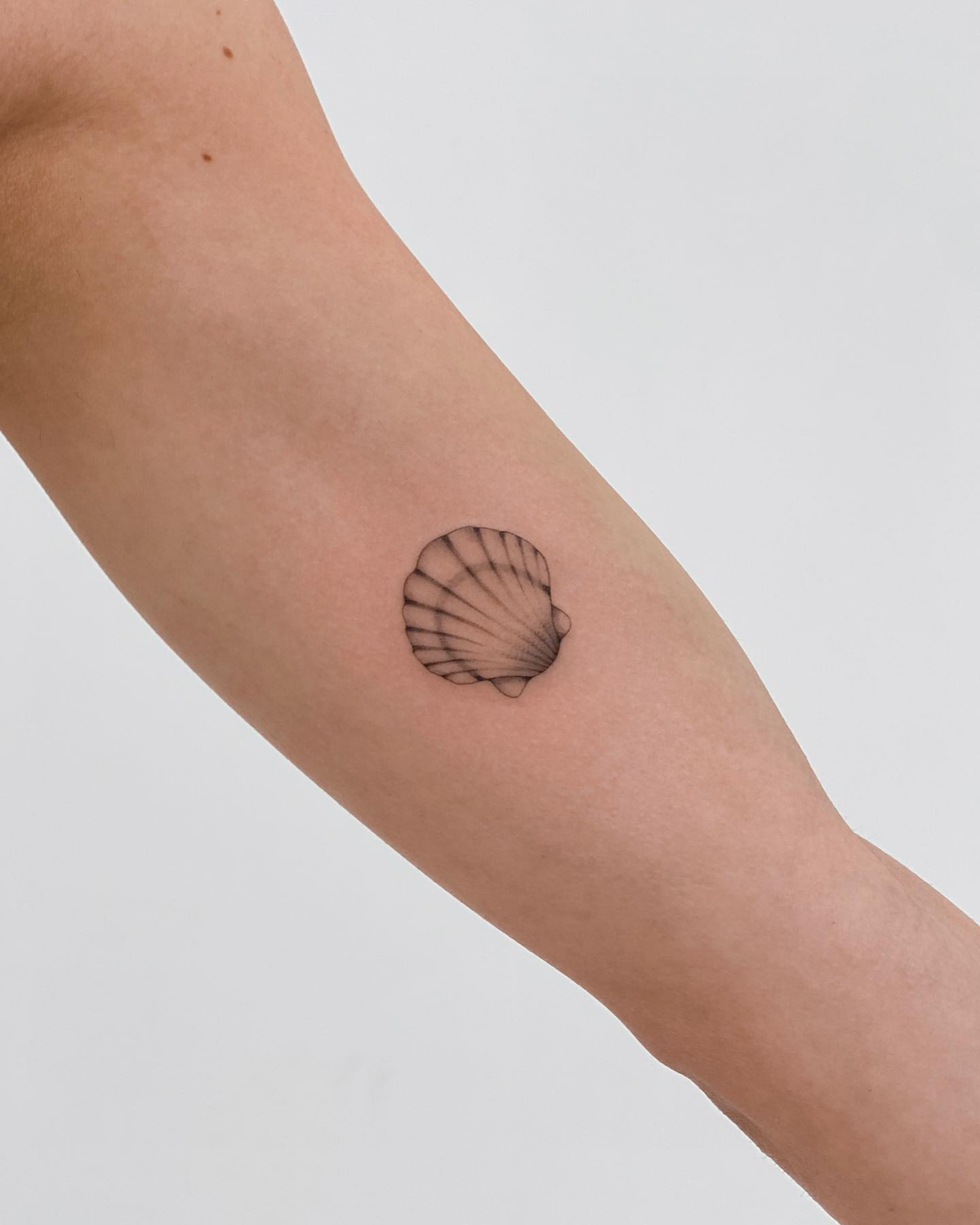
Thinking of a mythological ocean piece but want to swim past Poseidon?
The ocean’s lore is as deep as its trenches. Consider a Hippocampus, the half-horse, half-fish mount of the sea gods, symbolizing agility and loyalty. Or perhaps the Celtic Selkie, a seal that sheds its skin to become human on land, representing a hidden nature and a connection to two worlds. It’s a way to wear a story that’s both ancient and deeply personal.
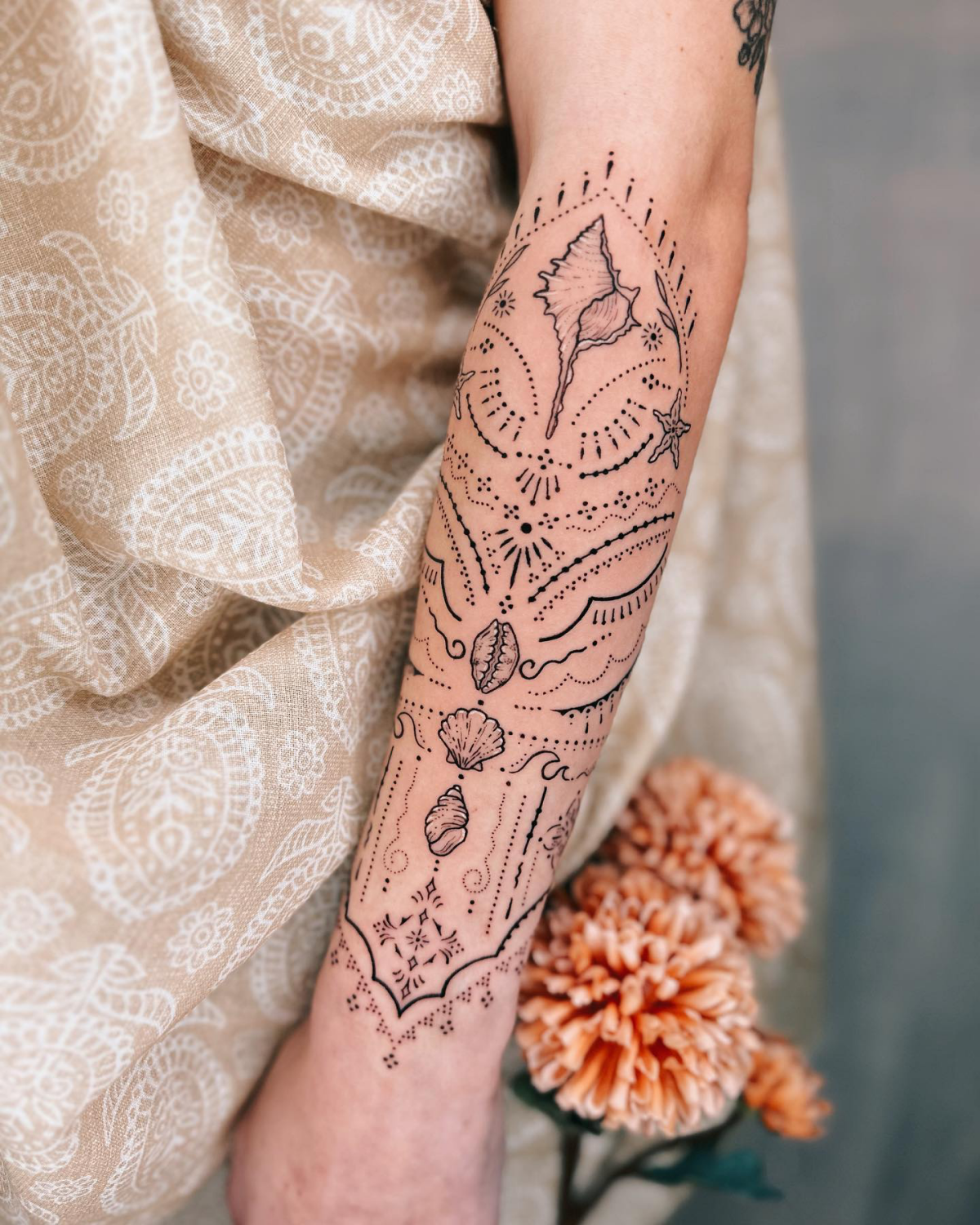
- Vibrant, lasting teals that mimic tropical waters.
- Deep, moody blues for a stormy North Atlantic feel.
- Brilliant seafoam greens and whites that pop.
The secret? High-quality, pigment-dense inks. Your artist isn’t just picking a color; they’re choosing a tool. Many top ocean specialists rely on brands like Eternal Ink for their ‘Seafoam’ and ‘Deep Sea’ or Fusion Ink’s ‘Tsunami Blue’ for their proven longevity and brilliance under the skin.

An ocean tattoo is rarely a silent piece. It’s the roar of a wave, the eerie quiet of the deep, or the rhythmic shush of water on sand. When designing, think about the sound and feeling you want to capture. A chaotic, crashing wave tattoo feels different from a serene, underwater scene with gentle light rays. Discuss this atmosphere with your artist—it will influence their use of line, color, and flow to translate that invisible sensation into visible art.
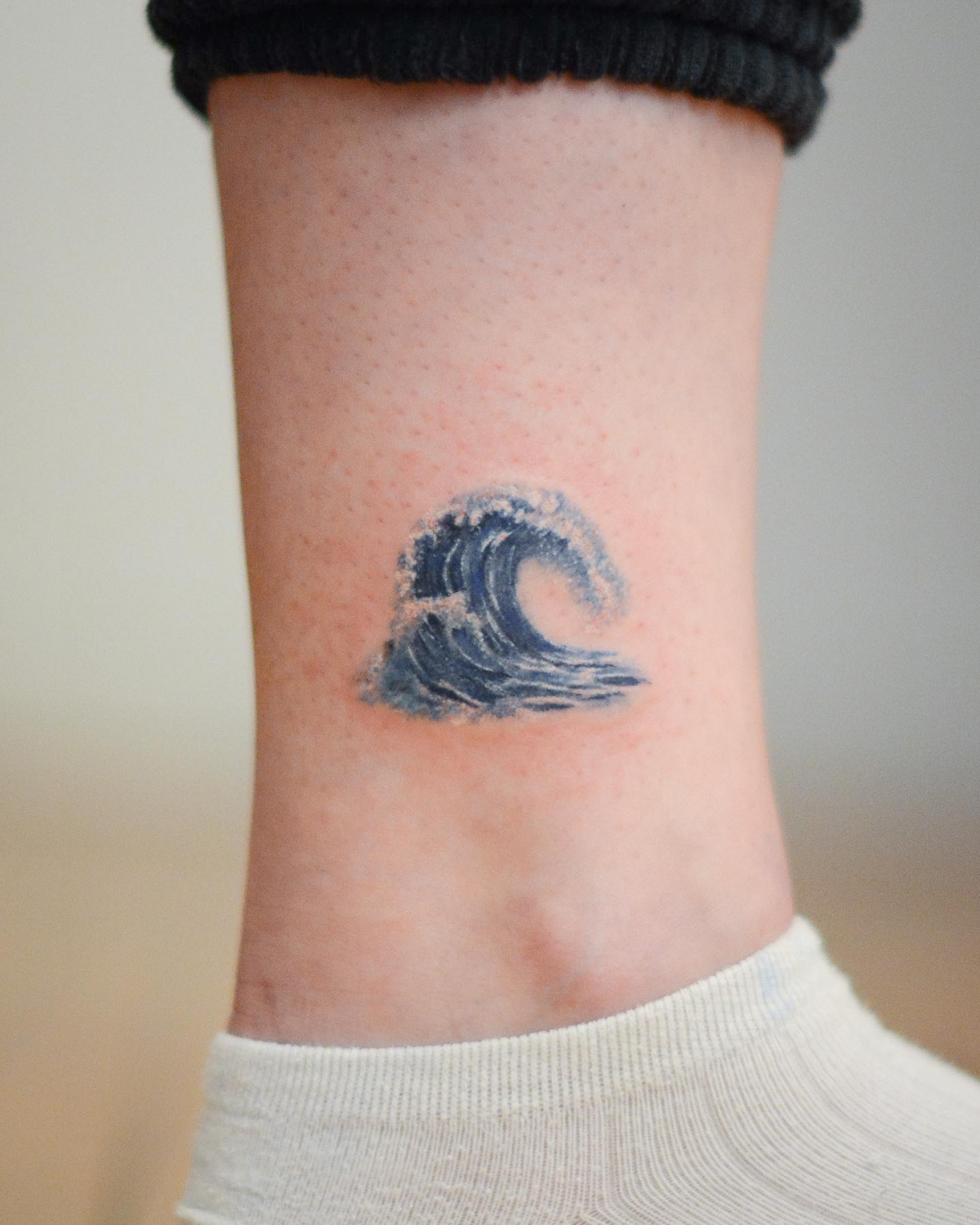
A study published in the Journal of Clinical and Aesthetic Dermatology found that up to 45% of tattoo fading can be attributed to unprotected sun exposure.
For an ocean tattoo, rich in blues and greens, the sun is a particular enemy. To keep your waves from washing out, daily application of a broad-spectrum, mineral-based sunscreen (SPF 30 or higher) is non-negotiable on exposed tattoos. Think of it as protecting your investment.
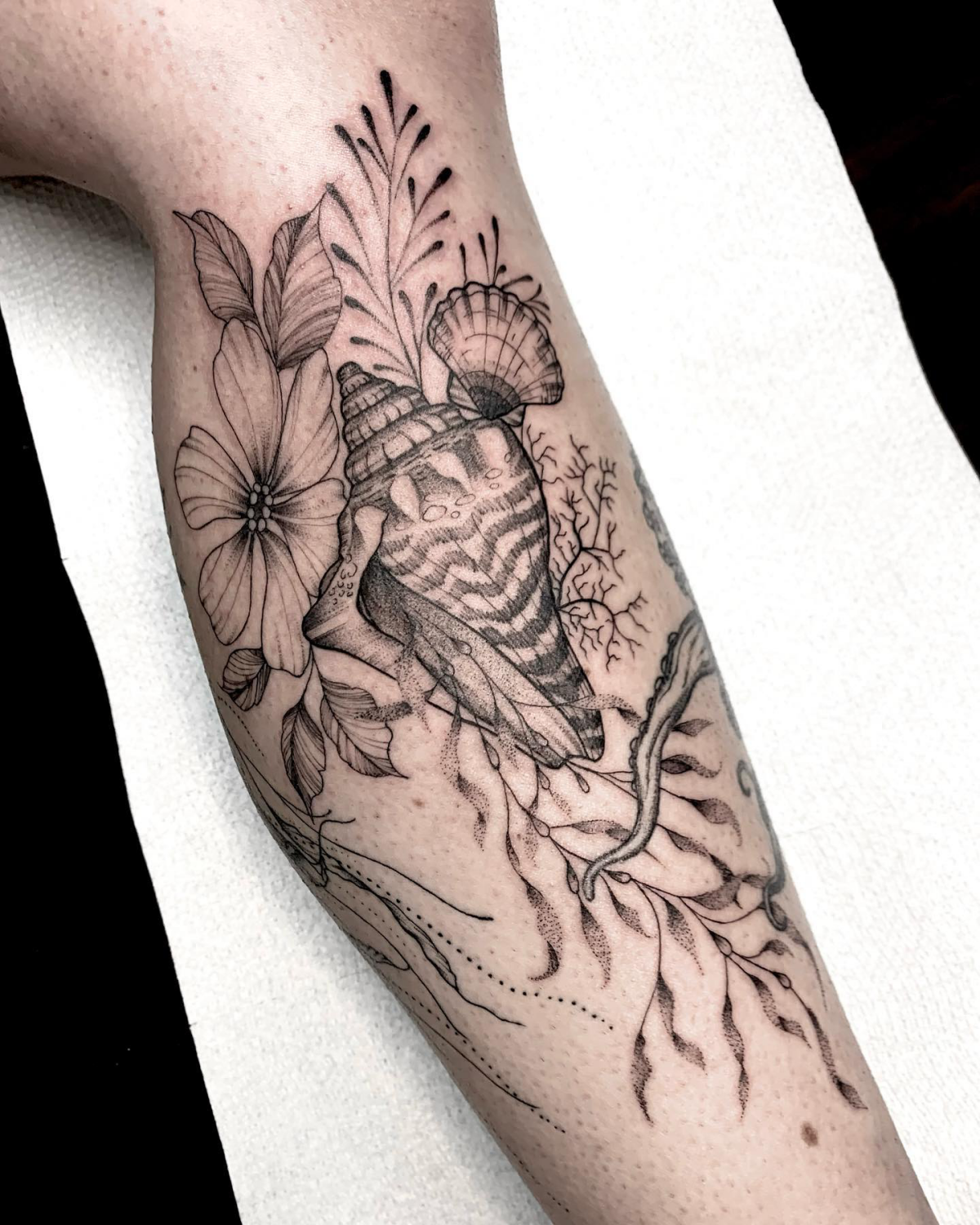
Important consideration: The flow of your body. A wave tattoo should never be static; it’s all about movement. A great artist will place it to work with your body’s natural lines. A wave wrapping around a forearm, for instance, should follow the curve of the muscle, so it seems to crash and flex as you move. Don’t fight your anatomy—use it to bring your ocean to life.
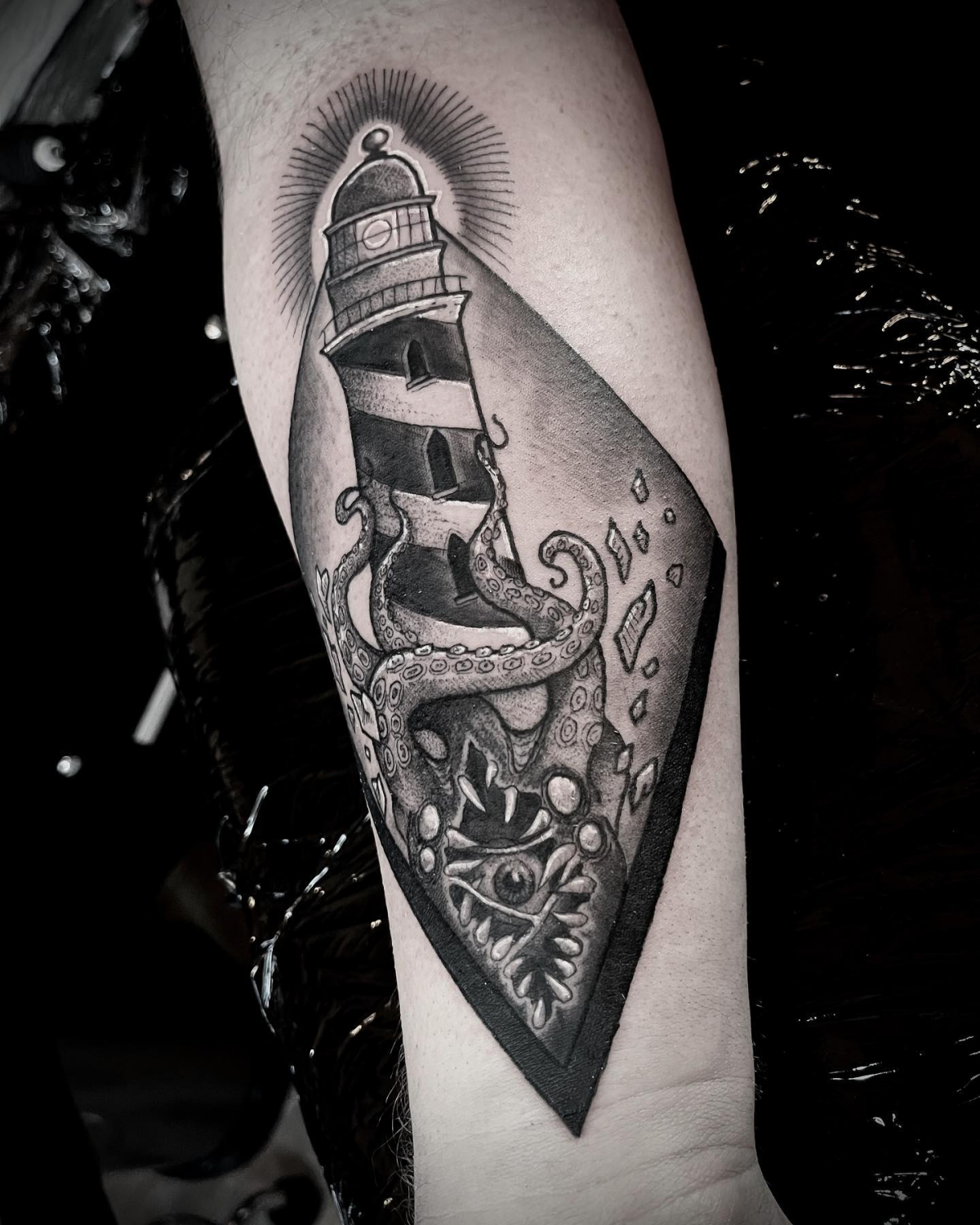
When planning a large, colorful ocean sleeve or back piece, remember that you’re commissioning a significant piece of art. Most artists who specialize in this work charge by the hour, and a full sleeve can take anywhere from 20 to 40+ hours. A photorealistic octopus will take significantly longer than a simple, stylized wave. Discuss a rough time estimate and a potential session plan with your artist upfront to budget both time and money effectively.
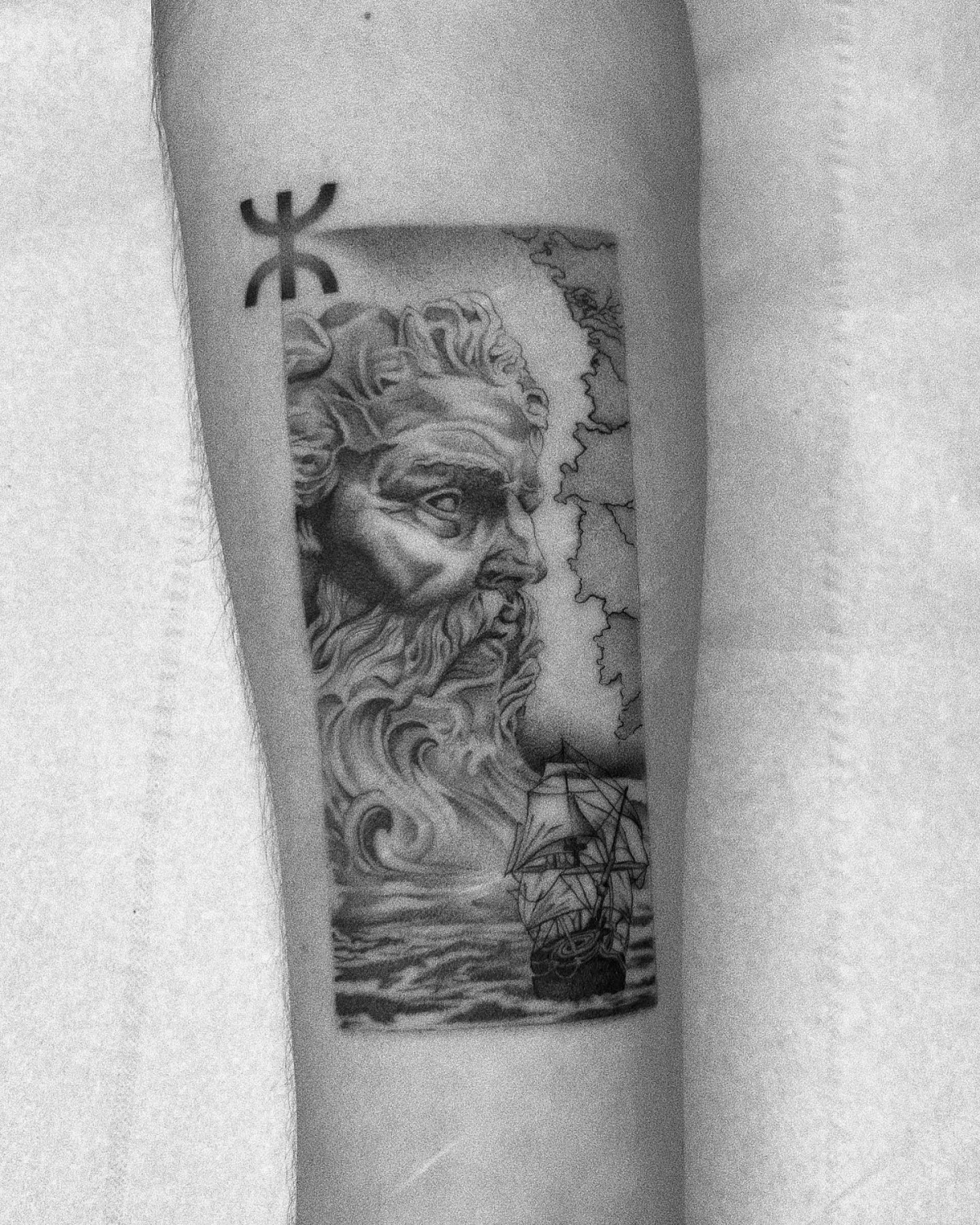
- Let it breathe for the first hour, then gently wash with unscented antibacterial soap.
- Apply a very thin layer of a specialized aftercare product like Hustle Butter or a simple ointment like Aquaphor for the first 2-3 days.
- After 3 days, switch to a fragrance-free, gentle lotion.
- Avoid soaking the tattoo in baths, pools, or the ocean for at least two weeks.
The nautilus shell is a living fossil that has survived in Earth’s oceans for 500 million years. Its spiral is a perfect example of a logarithmic spiral, a symbol of growth and evolution found throughout nature.










